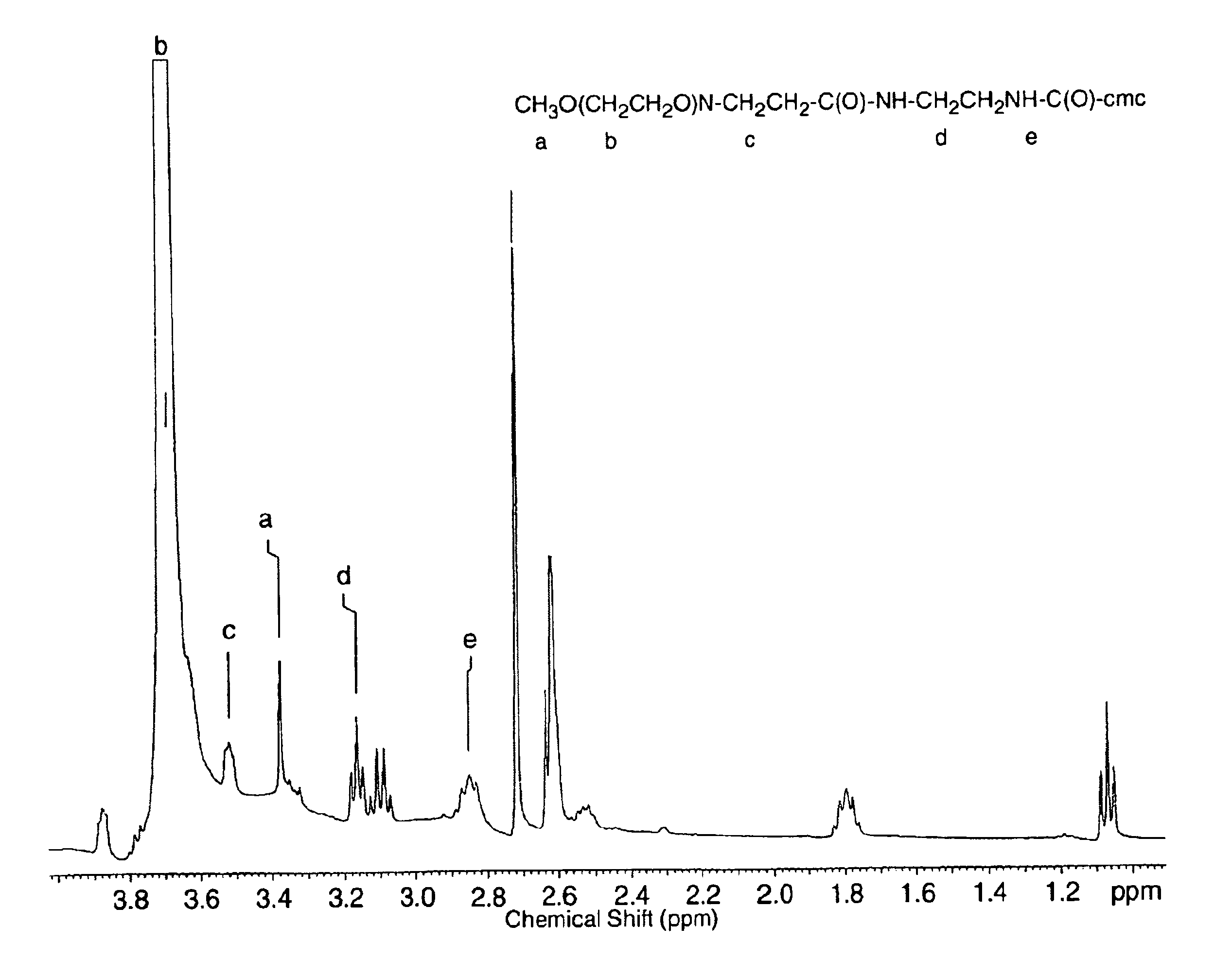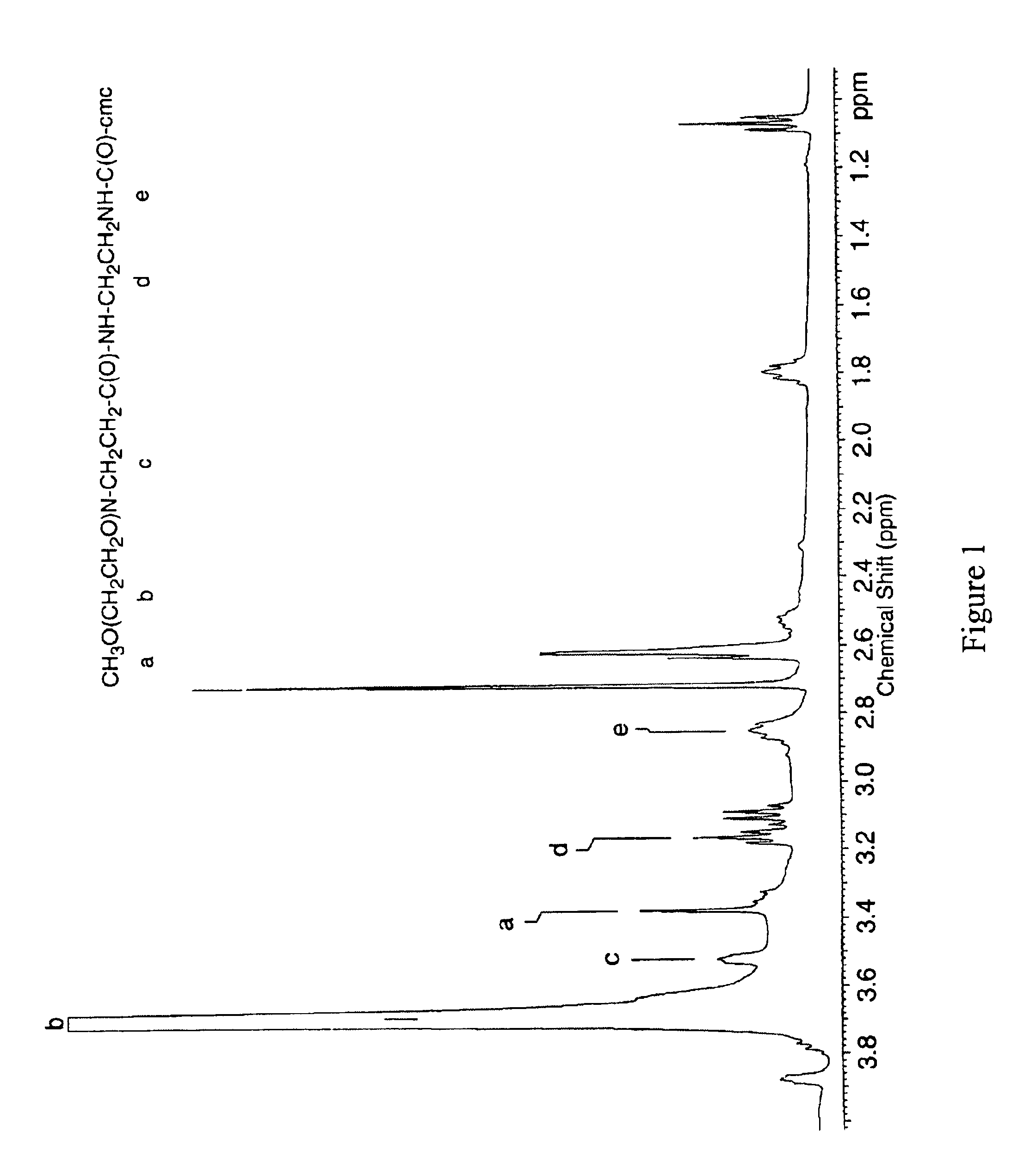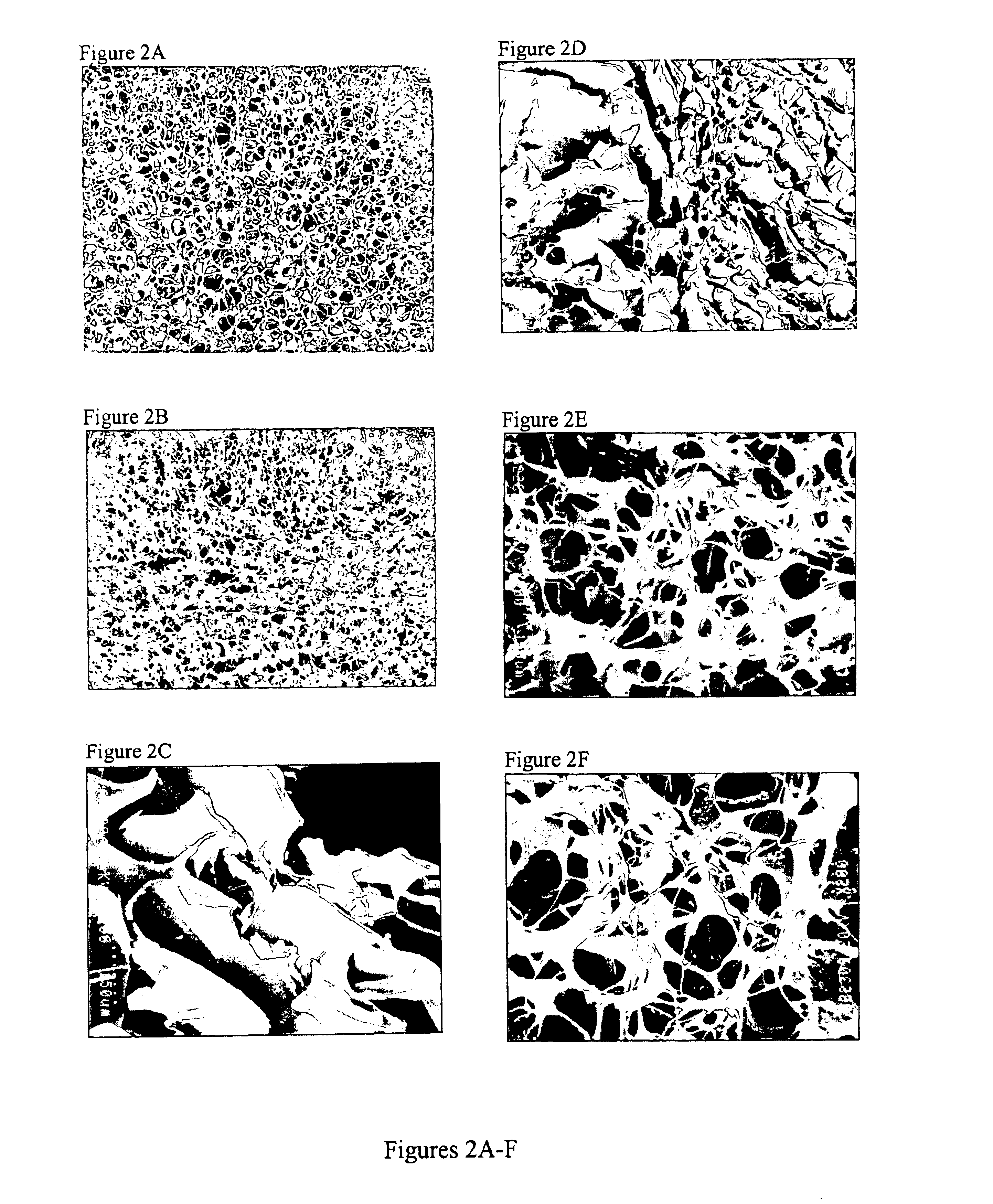Chemically activated carboxypolysaccharides and methods for use to inhibit adhesion formation and promote hemostasis
a technology of chemical activation and carboxypolysaccharides, which is applied in the direction of anti-infective drugs, peptides, drug compositions, etc., can solve the problems of inability to easily manufacture cps or cmc derivatives that can form covalent, ionic or other bonds, and no method for using derivatized cmc or other cps in polymers useful for drug delivery, hemostasis and/or adhesion prevention, etc. ,
- Summary
- Abstract
- Description
- Claims
- Application Information
AI Technical Summary
Benefits of technology
Problems solved by technology
Method used
Image
Examples
example 1
Preparation of CMC Having Primary Amine Groups
[0065]Primary amines can be introduced to the side chains of CMC by covalent modification of the carboxylic acids (carboxylate chains) in the polysaccharide with compounds containing primary amines at either end, such as ethylendiamine (EDA), to form amide linkages. To ensure that only one end of the compound coupled to each carboxylate and does not cross-link the macromolecules being modified, the diamine should be used in excess. Amide bond formation may be accomplished by several methods including carbodiimide mediated coupling, active ester intermediates, and the use of carbonylating compounds. In this study, a water soluble carbodiimide, 1-Ethyl-3-(3-dimethylaminopropyl) carbodiimide hydrochloride (EDC), was used. A protocol is described in the following paragraph.
Materials
[0066]CMC (degree of substitution, “DS”, 1.19), 3.0 g in 300 ml MES buffered saline (pH 4.7), EDA, 30.6 g in 45 ml MES; and EDC, 2.92 g in 5 ml MES.
Procedure
[0067...
example 2
Viscosity of CMC-N and CMC-N / PEO Composites
[0072]Primary amine carried CMC derivatives (CMC-N) prepared from CMCs with various DS (0.8 and 1.2) and molecular weight (700K and 250K Dalton) were firstly characterized for viscosity in various formulations: (1) composite gel with PEO (CMC-N / PEO); (2) in the presence (3) in the absence of calcium ion; and (4) as a coacervate with CMC. Experiment was performed at ambient temperature using a Brookfield Digital Viscometer (Model VD-II, Brookfield Engineering Laboratory, Inc.; Stoughton, Mass.) at the shear rate of 05 and spindle #29. The pH of these materials was about 7. Results are shown in Table 2 below.
[0073]
TABLE 2Viscosity of PEO / CMC CompositesSolution composition (%)CMCCMC-NH2PEOViscosity (cps)1.0000.3 × 1032.0001.1 × 103a)2.0003.4 × 104b)2.0001.6 × 10301.000.3 × 1030a)1.001.2 × 10302.000.7 × 1031.001.00.4 × 10301.01.00.7 × 1030a)1.01.01.7 × 1031.01.00 2.3 × 103*a)1.0a)1.00 0.9 × 106*Unless indicated, CMC used to prepare CMC-N deriva...
example 3
Tissue Adhesiveness of CMC-N / PEO Composites
[0075]The tissue adhesive property of gels was determined by measuring the force needed to detach the gels from the membrane using a modified Tape loop Tack Tester (Model LT-100; ChemInstruments, Fairfield, Ohio) equipped with a digital force meter (Chatillon Model DFM; Greensboro, N.J.). Membranes of porcine intestine were used as the receiver. The membranes were mounted onto each surface of both the test panel and specimen jaw, which was attached to the tension head by means of any a yoke and a release pin. The gap between the two membranes was adjusted to 2±1 mm by releasing and tightening the release pin. 5.0±0.1 ml of the gel were applied on the membrane bound to the test panel. All measurements were performed on settings as:[0076]Specimen jaw lowering speed: 9 mm / s[0077]Contact time: 3 minutes[0078]Contact area: 5.31 cm2 [0079]Specimen jaw withdrawal rate: 9 mm / s[0080]Withdrawal height: 4.5 cm
Each experiment was carried out five times...
PUM
| Property | Measurement | Unit |
|---|---|---|
| Fraction | aaaaa | aaaaa |
| Fraction | aaaaa | aaaaa |
| Fraction | aaaaa | aaaaa |
Abstract
Description
Claims
Application Information
 Login to View More
Login to View More - R&D
- Intellectual Property
- Life Sciences
- Materials
- Tech Scout
- Unparalleled Data Quality
- Higher Quality Content
- 60% Fewer Hallucinations
Browse by: Latest US Patents, China's latest patents, Technical Efficacy Thesaurus, Application Domain, Technology Topic, Popular Technical Reports.
© 2025 PatSnap. All rights reserved.Legal|Privacy policy|Modern Slavery Act Transparency Statement|Sitemap|About US| Contact US: help@patsnap.com



